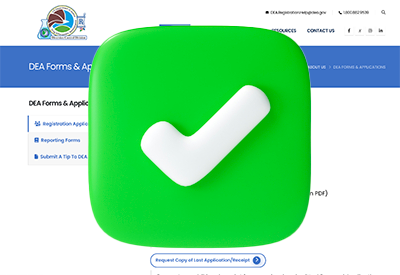Home » The GeneSight Genetic Test: A Review of the Evidence
The GeneSight Genetic Test: A Review of the Evidence
May 1, 2015
From The Carlat Psychiatry Report
Daniel Carlat, MD
Editor-in-Chief, Publisher, The Carlat Report.
Dr. Carlat has disclosed that he has no relevant relationships or financial interests in any commercial company pertaining to this educational activity.
Assurex Health recently sent me an email inviting me to dine at Legal Seafood to learn about “Clinical Applications of Psychiatric Pharmacogenetics.” I didn’t go, but increasingly I am hearing from colleagues about their experiences at these dinner programs: “What do you think about this GeneSight test? The data looked pretty impressive at this dinner.”
Clearly, the field of pharmacogenetic testing is growing up when companies can afford this kind of promotional money nation-wide. There are now several companies marketing such tests—including Assurex, Genomind, Genelex and others.
We covered this topic last fall (TCPR, October 2014) and concluded that there was not enough good evidence for using genetic testing in routine practice. In the following, I’ll zero in specifically on GeneSight to review the data—so that you’ll be more informed if you choose to dine courtesy of Assurex. Good food and wine tend to dull your critical faculties, and you don’t want a company to hypnotize you into adopting a very expensive test unless it will really help your patients.
The Context of Pharmacogenetic Testing
Humans vary genetically—not only in eye and hair color but in more obscure ways, such as how we metabolize drugs. While the majority of our patients metabolize drugs normally, a small percentage do not. Using the most important enzyme, 2D6, as a benchmark, roughly 5–10% of Caucasians are poor metabolizers, and 1% are ultra-rapid metabolizers (Ingelman-Sundberg, M, Pharmacogenomics J 2005;5(1):6–13). Of the remainder, the majority are “extensive” (or normal) metabolizers. You should know that these frequencies vary among ethnic groups—for example, only about 1% of Asians are slow metabolizers.
Before I discuss GeneSight, an important but often overlooked point is that the recent GeneSight studies were preceded by decades of disappointing clinical studies in this field. Two large reviews of the literature on pharmacogenetics in mood disorders—one in 2007 (Genet Med 2007;9(12):819–825) and one in 2013 (CNS Spectr 2013;18(5):272–284)—could find no association between metabolizer status and response of depressed patients to SSRIs. Tricyclics are a different story, with evidence-based guidelines recommending dosage adjustments based on P450 testing (Hicks JK et al, Clin Pharmacol Ther 93(5):402–408, 2013). But most psychiatrists are not using the new genetic tests for tricyclics, which we rarely prescribe.
The take home point is that there’s a long history of negative or inconclusive studies in the field—so GeneSight’s evidence had better be pretty convincing before we decide to change our clinical practice based on it.
The GeneSight Test
The basic GeneSight test as evaluated in their clinical trials analyzes patient DNA for genes encoding three metabolic enzymes and two serotonin-related proteins. The three enzymes are 2D6, 2C19, and 1A2—all of which are located in the liver and are involved in metabolizing various medications. The other two molecules are SLC6A4 (the serotonin transporter gene) and HTR2A (the serotonin 2A receptor gene). (GeneSight has expanded its testing panel since the clinical trials—you can find the current list on its website, www.genesight.com).
The metabolic enzymes are clearly relevant for metabolism—no surprises there. But why did they include the serotonin genes in the assay? Presumably because they can theoretically affect the antidepressant response. However, there’s no scientific consensus that we have found the right genes yet. The most definitive meta-analysis found no consistent evidence of a relationship between serotonin genes and response to any antidepressant (Am J Psychiatry 2013;170(2):207–217). So GeneSight’s adding these genes appears to serve little use other than to make their assay appear more robust than a simple test of P450 enzymes.
The testing process is quite simple: you use cotton cheek swabs to collect the DNA, the samples are overnighted to Assurex, and results are provided within 36 hours. As a doctor, you’ll be sent a report classifying a list of 38 psychiatric drugs into three possible categories: green bin (“use as directed”), yellow bin (“use with caution”) and red bin (“use with caution and with more frequent monitoring”). An easy example is Paxil, which is metabolized primarily by 2D6. Paxil will presumably show up in the red bin in two cases: if your patient is a poor metabolizer (because Paxil doses could go too high) or if he is an ultra-rapid metabolizer (the dose could be too low).
It all makes sense theoretically. But what about in actual practice?
The GeneSight Evidence
Three clinical studies have been conducted thus far. See the chart on this page for a brief summary of the main findings. There have been two open label studies, and one randomized, “double-blind” study (I’ll explain why I put quotes around that in a second). The methods of the studies are similar. Patients who are taking medications for depression are recruited from a clinic. They are assigned to one of two groups. In the guided group, patients are given the GeneSight test, the prescriber sees the results, and is free to make changes in the patients’ meds based on the results of the test. In the unguided group, patients get the test, but the results are sealed until after the study is over. Patients are periodically evaluated with standard depression scales, and the study length was eight weeks in the open label trials, 10 weeks in the randomized trial. The main outcome is whether patients assigned to the guided group improve more than those assigned to the unguided group.
Open Label Results
The open label studies found a statistically significant effect of using GeneSight to guide treatment. Open label studies are easy to conduct, and they’re great for generating hypotheses, but we shouldn’t rely on them to make clinical decision. Remember gabapentin? Open label studies found it apparently effective for bipolar disorder—but subsequent double-blind studies did not.
GeneSight’s open label studies are vulnerable to various possible biases that might render the results meaningless. Here are some potential problems.
The bottom line is that the open label studies can tell us very little other than that GeneSight appears to have potential—and that it’s time to do the more expensive randomized double-blinded tests.
Randomized Results
The randomized double blind study was not “double” blind in the way drug trials are. The idea behind the double blind is that neither the researchers nor the patients know which group they are assigned to, so that there is no possibility of various biases or placebo effects creeping in. The GeneSight double blind study was blinded only to patients and symptom raters, and not to prescribers, who might have been cheerleading their patients to wellness.
Nonetheless, the results of that study showed a numerical superiority of guided treatment, but it was not statistically significant. For example, the difference in the Ham-D scores had a p value was 0.29—which means that there was a 29% chance that this difference was due to chance. The usual cut-off for statistical significance is 5%, so this result was not close to being significant. It’s possible that if they had recruited more patients, they might have found a significant difference. But for now we have to conclude that there is no convincing evidence that the GeneSight test helps us prescribe more effective medications for our patients
However, there is a bit of a silver lining for GeneSight in this study. In a subanalysis, the author focused on the 13 patients who entered the study taking antidepressants that were classified in the red bin—in other words, “use with caution and with more frequent monitoring.” Six of these were randomized to the guided group, and their doctors used the results to adjust the meds of all of these patients, who ended the study with a 33.1% Ham-D improvement. On the other hand, the seven patients who were assigned to the unguided group were less likely to have their meds changed, and they improved by only 0.8% on the Ham-D. This is intriguing, and raises the possibility that GeneSight might be useful for some patients. But remember—this is based on a subanalysis of 13 patients from an already tiny study.
Bottom Line
If we were to hold the GeneSight test to the usual standards we require for making medication decisions, we’d conclude that there’s very little reliable evidence that it works. On the other hand, some of you will probably want to try it out, especially for those patients who have insurance that will cover the cost of the test. If you do order it, reserve it for patients who are most likely to benefit, including patients who have failed to respond to multiple medications (which could be caused by ultra-rapid metabolism, causing drug levels to be too low), and patients who have had lots of side effects (potentially caused by slow metabolism, causing drug levels to he too high).
General PsychiatryClearly, the field of pharmacogenetic testing is growing up when companies can afford this kind of promotional money nation-wide. There are now several companies marketing such tests—including Assurex, Genomind, Genelex and others.
We covered this topic last fall (TCPR, October 2014) and concluded that there was not enough good evidence for using genetic testing in routine practice. In the following, I’ll zero in specifically on GeneSight to review the data—so that you’ll be more informed if you choose to dine courtesy of Assurex. Good food and wine tend to dull your critical faculties, and you don’t want a company to hypnotize you into adopting a very expensive test unless it will really help your patients.
The Context of Pharmacogenetic Testing
Humans vary genetically—not only in eye and hair color but in more obscure ways, such as how we metabolize drugs. While the majority of our patients metabolize drugs normally, a small percentage do not. Using the most important enzyme, 2D6, as a benchmark, roughly 5–10% of Caucasians are poor metabolizers, and 1% are ultra-rapid metabolizers (Ingelman-Sundberg, M, Pharmacogenomics J 2005;5(1):6–13). Of the remainder, the majority are “extensive” (or normal) metabolizers. You should know that these frequencies vary among ethnic groups—for example, only about 1% of Asians are slow metabolizers.
Before I discuss GeneSight, an important but often overlooked point is that the recent GeneSight studies were preceded by decades of disappointing clinical studies in this field. Two large reviews of the literature on pharmacogenetics in mood disorders—one in 2007 (Genet Med 2007;9(12):819–825) and one in 2013 (CNS Spectr 2013;18(5):272–284)—could find no association between metabolizer status and response of depressed patients to SSRIs. Tricyclics are a different story, with evidence-based guidelines recommending dosage adjustments based on P450 testing (Hicks JK et al, Clin Pharmacol Ther 93(5):402–408, 2013). But most psychiatrists are not using the new genetic tests for tricyclics, which we rarely prescribe.
The take home point is that there’s a long history of negative or inconclusive studies in the field—so GeneSight’s evidence had better be pretty convincing before we decide to change our clinical practice based on it.
The GeneSight Test
The basic GeneSight test as evaluated in their clinical trials analyzes patient DNA for genes encoding three metabolic enzymes and two serotonin-related proteins. The three enzymes are 2D6, 2C19, and 1A2—all of which are located in the liver and are involved in metabolizing various medications. The other two molecules are SLC6A4 (the serotonin transporter gene) and HTR2A (the serotonin 2A receptor gene). (GeneSight has expanded its testing panel since the clinical trials—you can find the current list on its website, www.genesight.com).
The metabolic enzymes are clearly relevant for metabolism—no surprises there. But why did they include the serotonin genes in the assay? Presumably because they can theoretically affect the antidepressant response. However, there’s no scientific consensus that we have found the right genes yet. The most definitive meta-analysis found no consistent evidence of a relationship between serotonin genes and response to any antidepressant (Am J Psychiatry 2013;170(2):207–217). So GeneSight’s adding these genes appears to serve little use other than to make their assay appear more robust than a simple test of P450 enzymes.
The testing process is quite simple: you use cotton cheek swabs to collect the DNA, the samples are overnighted to Assurex, and results are provided within 36 hours. As a doctor, you’ll be sent a report classifying a list of 38 psychiatric drugs into three possible categories: green bin (“use as directed”), yellow bin (“use with caution”) and red bin (“use with caution and with more frequent monitoring”). An easy example is Paxil, which is metabolized primarily by 2D6. Paxil will presumably show up in the red bin in two cases: if your patient is a poor metabolizer (because Paxil doses could go too high) or if he is an ultra-rapid metabolizer (the dose could be too low).
It all makes sense theoretically. But what about in actual practice?
The GeneSight Evidence
Three clinical studies have been conducted thus far. See the chart on this page for a brief summary of the main findings. There have been two open label studies, and one randomized, “double-blind” study (I’ll explain why I put quotes around that in a second). The methods of the studies are similar. Patients who are taking medications for depression are recruited from a clinic. They are assigned to one of two groups. In the guided group, patients are given the GeneSight test, the prescriber sees the results, and is free to make changes in the patients’ meds based on the results of the test. In the unguided group, patients get the test, but the results are sealed until after the study is over. Patients are periodically evaluated with standard depression scales, and the study length was eight weeks in the open label trials, 10 weeks in the randomized trial. The main outcome is whether patients assigned to the guided group improve more than those assigned to the unguided group.
Open Label Results
The open label studies found a statistically significant effect of using GeneSight to guide treatment. Open label studies are easy to conduct, and they’re great for generating hypotheses, but we shouldn’t rely on them to make clinical decision. Remember gabapentin? Open label studies found it apparently effective for bipolar disorder—but subsequent double-blind studies did not.
GeneSight’s open label studies are vulnerable to various possible biases that might render the results meaningless. Here are some potential problems.
- Patients were not assigned to groups randomly, but were chosen based on conversations with doctors and researchers. One potential source of bias: doctors may have preferentially assigned more complicated patients to the guided group on the theory that they would be most helped by genetic testing. If so, we wouldn’t really know if the results are applicable to all the patients we see, or just some undefined subset.
- Patients assigned to the guided group knew they were getting a cutting-edge genetic test that could predict which medication would work best for them. Patients in the other group knew the test results would not be used for their treatment. Clearly, those in the guided group would be more optimistic about their treatment, which is a key component of the non-specific placebo effect.
- Prescribers knew which patients were being guided by the test, potentially leading to the “cheerleader effect.”
- The symptom raters knew which patients were in which group, potentially leading to biased ratings, since the raters may have vested interests in GeneSight being successful.
The bottom line is that the open label studies can tell us very little other than that GeneSight appears to have potential—and that it’s time to do the more expensive randomized double-blinded tests.
Randomized Results
The randomized double blind study was not “double” blind in the way drug trials are. The idea behind the double blind is that neither the researchers nor the patients know which group they are assigned to, so that there is no possibility of various biases or placebo effects creeping in. The GeneSight double blind study was blinded only to patients and symptom raters, and not to prescribers, who might have been cheerleading their patients to wellness.
Nonetheless, the results of that study showed a numerical superiority of guided treatment, but it was not statistically significant. For example, the difference in the Ham-D scores had a p value was 0.29—which means that there was a 29% chance that this difference was due to chance. The usual cut-off for statistical significance is 5%, so this result was not close to being significant. It’s possible that if they had recruited more patients, they might have found a significant difference. But for now we have to conclude that there is no convincing evidence that the GeneSight test helps us prescribe more effective medications for our patients
However, there is a bit of a silver lining for GeneSight in this study. In a subanalysis, the author focused on the 13 patients who entered the study taking antidepressants that were classified in the red bin—in other words, “use with caution and with more frequent monitoring.” Six of these were randomized to the guided group, and their doctors used the results to adjust the meds of all of these patients, who ended the study with a 33.1% Ham-D improvement. On the other hand, the seven patients who were assigned to the unguided group were less likely to have their meds changed, and they improved by only 0.8% on the Ham-D. This is intriguing, and raises the possibility that GeneSight might be useful for some patients. But remember—this is based on a subanalysis of 13 patients from an already tiny study.
Bottom Line
If we were to hold the GeneSight test to the usual standards we require for making medication decisions, we’d conclude that there’s very little reliable evidence that it works. On the other hand, some of you will probably want to try it out, especially for those patients who have insurance that will cover the cost of the test. If you do order it, reserve it for patients who are most likely to benefit, including patients who have failed to respond to multiple medications (which could be caused by ultra-rapid metabolism, causing drug levels to be too low), and patients who have had lots of side effects (potentially caused by slow metabolism, causing drug levels to he too high).

Issue Date: October 3, 2015
Table Of Contents
Recommended
Newsletters
Please see our Terms and Conditions, Privacy Policy, Subscription Agreement, Use of Cookies, and Hardware/Software Requirements to view our website.
© 2025 Carlat Publishing, LLC and Affiliates, All Rights Reserved.


_-The-Breakthrough-Antipsychotic-That-Could-Change-Everything.jpg?1729528747)



